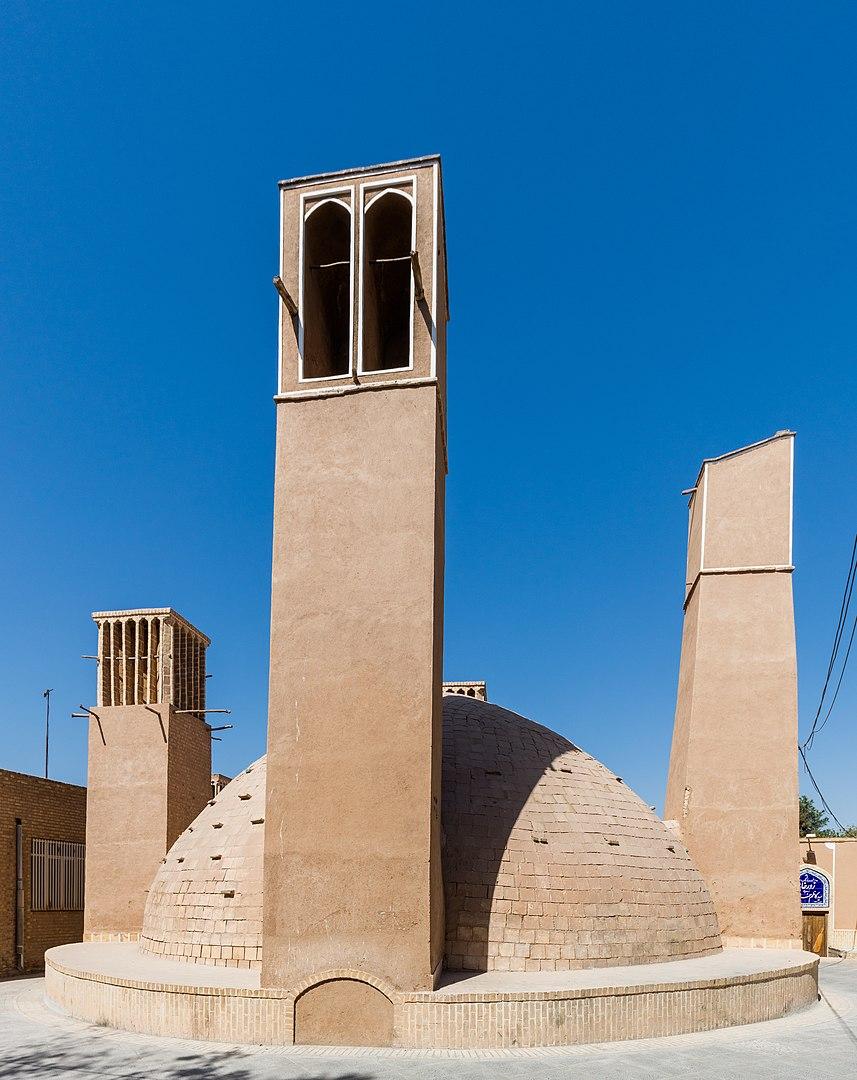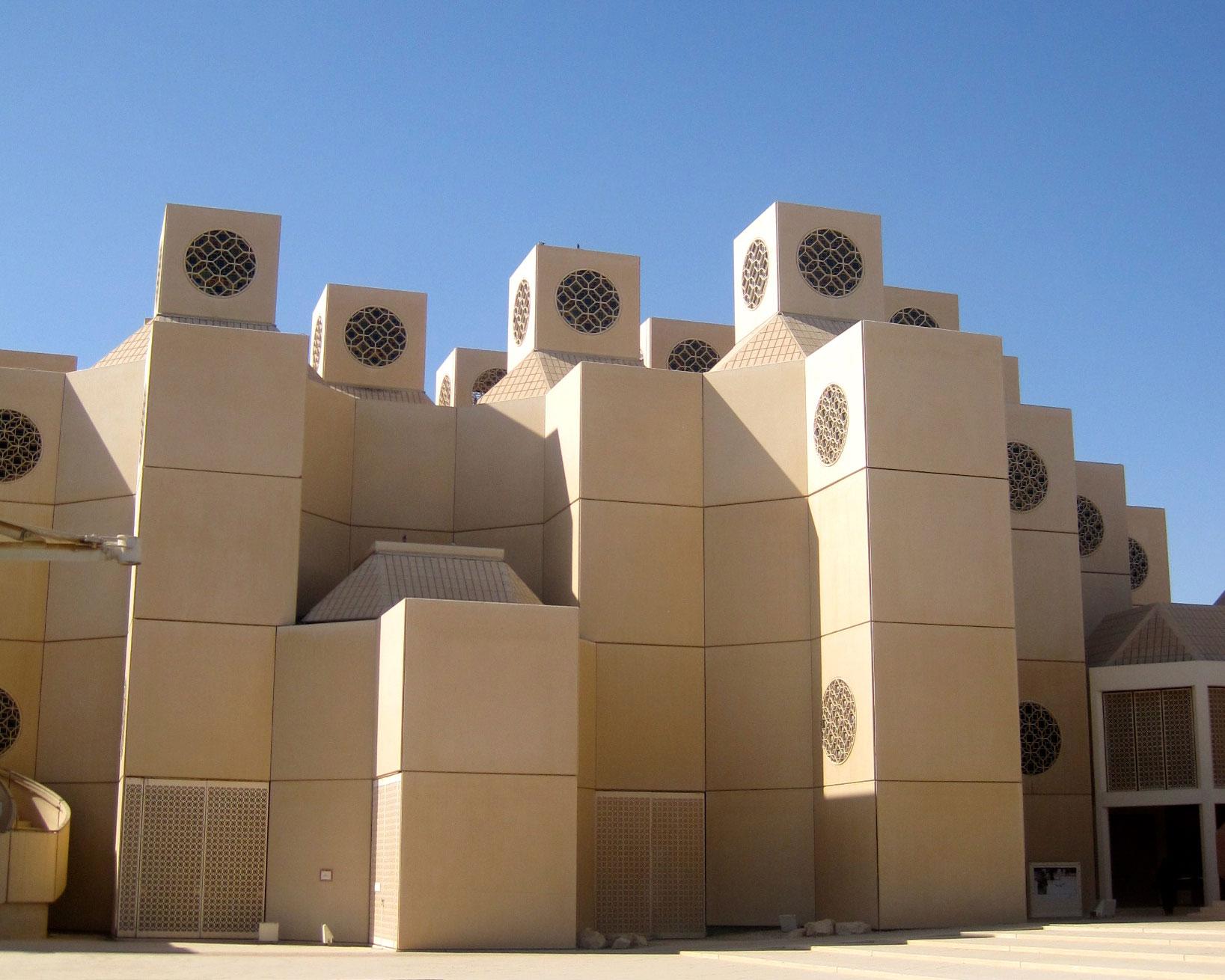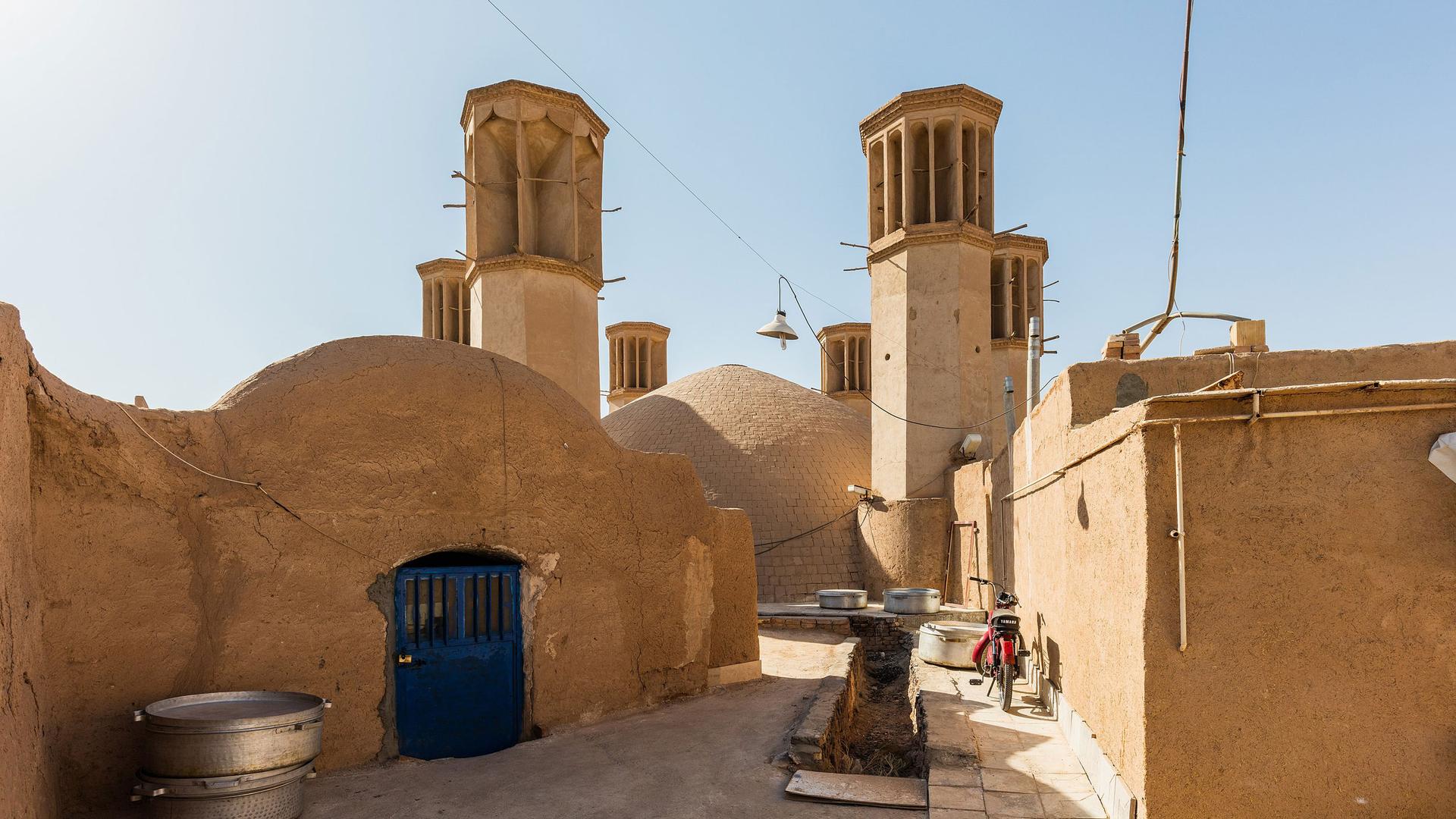As a kid, radio producer Sima Ghadirzadeh spent her summers in one of the hottest places on earth — the desert city of Yazd, Iran.
“Yazd was always to me this mysterious place that had miraculously escaped the process of modernization,” Ghadirzadeh said.
Here, intricate wind-catching towers rise above the alleyways — they’re boxy, geometric structures that take in cooler, less dusty air from high above the city and push it down into homes below.

Wind catchers don’t require electricity or mechanical help to push cold air into a home, just the physical structure of the tower — and the laws of nature. Cold air sinks. Hot air rises.
Ghadirzadeh said she can remember as a child standing underneath one in her uncle’s living room in Yazd.
“Having been outside in the heat, and then suddenly, going inside and being right under the wind catcher and feeling the cool breeze on you, was so mysterious,” Ghadirzadeh said.
Temperatures in Yazd can regularly reach 115 degrees Fahrenheit. But somehow, it was bearable, Ghadirzadeh said. She and her cousins spent their days exploring the city’s shaded alleyways or in the basement. Evenings were spent on the rooftop under the stars. Mornings, back again in the thick-walled rooms and courtyards.
Historians say wind catchers are at least 700 years old. Written records in travelers’ diaries and poems reference the unique cooling structures.
“From the 13th century, we have references to the wind catcher — by some estimates, they were in use in the 10th and 11th centuries,” said Naser Rabbat, director of the Aga Khan program for Islamic architecture at MIT.
Most wind catchers only cooled the air by a few degrees, but the psychological impact was significant, Rabbat said. They soon appeared all over the medieval Muslim world, from the Persian Gulf to the seat of the Mamluk empire in Cairo, where they are called malqaf.
In Iran, the wind catcher is a raised tower that usually opens on four sides because there’s not a dominant wind direction, Rabat said. The ones in Cairo are “extremely simple in form,” usually with a slanted roof and a screen facing the direction of favorable wind, he added.
Over time, wind catchers became symbols of wealth and success, growing increasingly elaborate. Homeowners would install intricate screens to keep out the birds. Water features and courtyard pools could bring the temperature down even more.
“They would even put water jars made out of clay underneath — that would cool the air further,” Rabbat said. “Or, you can put a wet cloth and allow the breeze to filter through, and carry humidity.”
Many of the older techniques that kept life comfortable in the Persian Gulf fell out of favor after World War II, said New York and Beirut-based architect Ziad Jamaleddine. The leaders of these countries commissioned European architects to build cities in their image.
“Partially demolishing or totally erasing the historic urban and dense fabric,” Jamaleddine said.
Those shaded walkways, created by overhanging buildings and angled streets so beloved in historic cities like Yazd, were no longer considered desirable.
“What they did is they substituted it with the gridded urban fabric city we are very familiar with today. Which perhaps, made sense in the cold climate of western Europe,” Jamaleddine said.
But in a place like Kuwait or Abu Dhabi, mass quantities of cool air are necessary to make this type of urban planning comfortable.
Attempts to re-create wind catchers occurred during the oil crisis of the 1970s and 1980s in cities like Doha, where the Qatar University campus incorporates several equally distributed wind towers. But these projects became less common when oil prices returned to normal.

Wind catchers are not easy to replicate without a deep understanding of the landscape and environment, Jamaleddine said.
“It’s closely related to the way people live, and how they inhabit a space. It can’t simply be copied.”
Architects call this the principle of “passive solar design.”
Today, air conditioners and fans make up more than 10% of global electricity use, according to the International Energy Agency. The air conditioners are leaking refrigerant into the atmosphere, which acts as a greenhouse gas. And they no longer function when the power goes out — as seen this summer during extreme heat waves across the world.
Architect Sue Roaf thinks it’s “almost criminal” to build structures that continue to rely on air-conditioning, knowing its impact on the climate. Roaf focuses on climate-adaptive building and chose to build her home using the same principles of ventilation and insulation that she learned while studying the wind catchers of Yazd.
Strategically placed windows and thick, cave-like walls keep Roaf’s home at a cool 69 degrees Fahrenheit without air-conditioning, even during Britain’s historic heat wave this summer.
“I have a vertical roof up the center of the house, and there’s a roof light that I open up,” Roaf said. “So, you get the stack effect, drawing cooler air or warmer air through the house.”
It’s a passion project that demonstrates what’s possible for building in a warming world.
“The old thinking was more romantic – let us learn from the ancients,” Rabbat said. “The new thinking is [that] we have much more calibratable technology. Why don’t we use it to harvest much more of the energy we can collect?”
For example, mechanical pumps could spray vapor inside, cooling the air the same way the ceramic jugs of water once worked under the wind catchers of Yazd, he said.
Today, Yazd is a bustling city full of motorcycles and high-rise buildings. But video editor Mohamed Bandekhoda said he likes the older parts best.
“Whenever I’m sad or depressed, I go for a walk in the Old City,” he said. “The breeze in the alleys heals you.”
Wind catchers dot the beautiful Yazd skyline, Bandekhoda said, but he’s only seen ones that are restored and open for tourists. He’s never been inside a home with one in use.
“My grandmother’s house, for example, has one — but no one knows where to open it,” Bandekhoda said.
For now, it remains in wait, ready to inspire the next generation of climate-conscious architects.
